World War II, the most massive and appalling military conflagration in history began on September 1, 1939 when Hitler's troops invaded Poland and from there, it spread inexorably in all directions. On December 7 1941, the Japanese bombed Pearl Harbour, thus bringing the huge American armies into the picture and the Pacific was ablaze as Japan and America fought a devastating island-hopping war across the ocean. As well as swallowing millions of lives, the demands of the military machine gave rise to the atom bomb and the computer; the British Empire was dying but the Commonwealth was heralded; the war made Churchill and the 'spiv'; it created rationing and the Welfare State; it slaughtered 6,000,000 Jews, broke marriages and laid waste to the European economy. This is a graphic account of the fateful years that changed the world forever. Illustrated with black and white photos.
- Sorry, this product is unavailable.
-
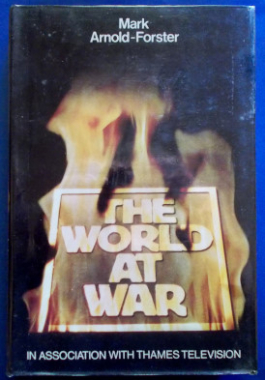
-
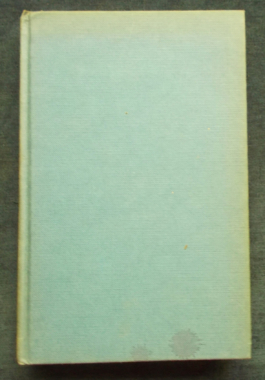
 They were American and British air force officers in a German prison camp. With only their bare hands and the crudest of homemade tools, they sank shafts, forged passports, faked weapons, and tailored German uniforms and civilian clothes. They developed a fantastic security system to protect themselves from German surveillance. It was a split-second operation as delicate and as deadly as a time bomb. It demanded the concentrated devotion and vigilance of more than six hundred men - every one of them, every minute, every hour, every day and night for more than a year. With black and white photographs.
They were American and British air force officers in a German prison camp. With only their bare hands and the crudest of homemade tools, they sank shafts, forged passports, faked weapons, and tailored German uniforms and civilian clothes. They developed a fantastic security system to protect themselves from German surveillance. It was a split-second operation as delicate and as deadly as a time bomb. It demanded the concentrated devotion and vigilance of more than six hundred men - every one of them, every minute, every hour, every day and night for more than a year. With black and white photographs. -
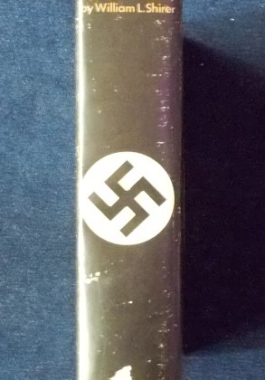
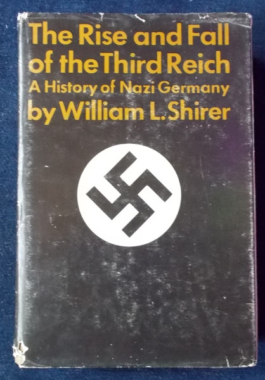
Here for the first time is the complete history of Hitler's empire. No other empire ever bequeathed to historians such mountains of evidence about its rise and fall as the Third Reich. The Allied demand for unconditional surrender produced - before the Nazis could destroy their files - an almost hour-to-hour record of the nightmare realm created by Hitler. This record includes the testimony of Nazi leaders, concentration camp inmates, the diaries of officials, transcripts of secret conferences, army orders, private letters - all the vast paper work behind a conspiracy to conquer the world. This is also the story of Hitler the man - his love affairs, his imprisonment, his suicide. There is also details of the plot to kidnap the Duke and Duchess of Windsor and hundreds of other inside stories. Most of all, it is the story of how Hitler destroyed his beloved Germany. The author, who watched and reported on the Nazis since 1925 had been reporting on-the-spot from Germany and Europe for almost forty years and spent over five years sifting the mountains of paper that eventually became this definitive history.
-
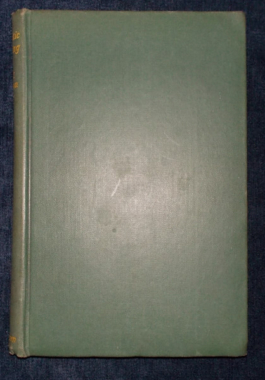
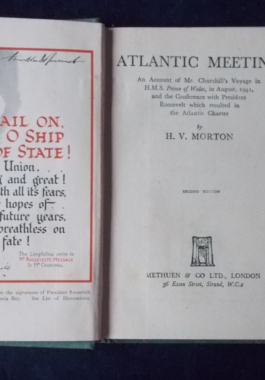 An account of Churchill's voyage in August 1941 on the Prince of Wales and his meeting with President Roosevelt, the outcome of which was the Atlantic Charter.
An account of Churchill's voyage in August 1941 on the Prince of Wales and his meeting with President Roosevelt, the outcome of which was the Atlantic Charter. -
 Using secret American, British and German sources previously unavailable, this story appears almost incredible. Few people know that behind all of the great decisions- and many of the small ones - of the past two world wars, lay information gathered from secret intelligence, either from agents or intercepted coded messages. At the time of writing the whole structure was still classified, yet Farago was able to obtain German records that had been lost for a generation, revealing a vast espionage network strung across Britain and the United States. He also shows how the Germans mopped up the British espionage network in 1939, and how it was painfully and carefully rebuilt by a new generation of British intelligence officers who cracked the German codes and fed false information to the Abwehr throughout the war, eventually contributing to the defeat of the Axis powers.
Using secret American, British and German sources previously unavailable, this story appears almost incredible. Few people know that behind all of the great decisions- and many of the small ones - of the past two world wars, lay information gathered from secret intelligence, either from agents or intercepted coded messages. At the time of writing the whole structure was still classified, yet Farago was able to obtain German records that had been lost for a generation, revealing a vast espionage network strung across Britain and the United States. He also shows how the Germans mopped up the British espionage network in 1939, and how it was painfully and carefully rebuilt by a new generation of British intelligence officers who cracked the German codes and fed false information to the Abwehr throughout the war, eventually contributing to the defeat of the Axis powers. -
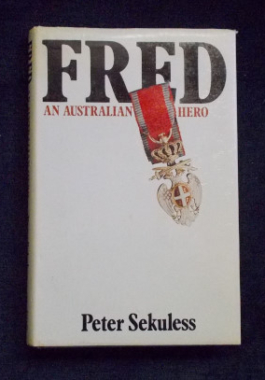 Toward the end of 1977, articles appeared in Australian newspapers about a remarkable 97 year-old Australian who had just died in Khartoum. They told of an heroic figure who had been with General Freyberg, then a junior officer, when he made his daring Dardenelles swim before the landing at Gallipoli; who had been mentioned in dispatches at the Battle of Beersheba; who had been with Lawrence of Arabia and who had won several decorations, including the George Cross for bravery under fire when he was chauffeur to the Governor-General of the Sudan at the time of his assassination in Cairo in 1924. He was one of the few Australians ever to win the coveted Serbian Eagle. This incredible Australian was Frederick Hamilton March. The newspaper articles so intrigued Sekuless than he began keeping a file on Fred March. Eventually, he travelled to Khartoum, Cairo, Gallipoli and London in a quest for information about this elusive and unknown Aussie hero to piece together the fascinating story of Fred March. Illustrated with black and white archival photographs.
Toward the end of 1977, articles appeared in Australian newspapers about a remarkable 97 year-old Australian who had just died in Khartoum. They told of an heroic figure who had been with General Freyberg, then a junior officer, when he made his daring Dardenelles swim before the landing at Gallipoli; who had been mentioned in dispatches at the Battle of Beersheba; who had been with Lawrence of Arabia and who had won several decorations, including the George Cross for bravery under fire when he was chauffeur to the Governor-General of the Sudan at the time of his assassination in Cairo in 1924. He was one of the few Australians ever to win the coveted Serbian Eagle. This incredible Australian was Frederick Hamilton March. The newspaper articles so intrigued Sekuless than he began keeping a file on Fred March. Eventually, he travelled to Khartoum, Cairo, Gallipoli and London in a quest for information about this elusive and unknown Aussie hero to piece together the fascinating story of Fred March. Illustrated with black and white archival photographs. -
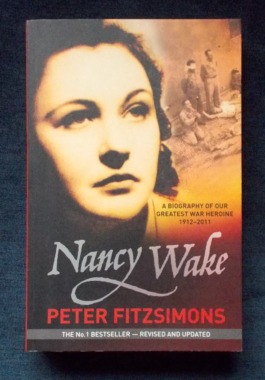
Nancy Wake: Peter Fitzsimons
$15.00In the early 1930s, Nancy Wake was a young woman enjoying a bohemian life in Paris. By the end of the Second World War, she was the Gestapo's most wanted person. As a naïve, young journalist, Nancy witnessed a horrific scene of Nazi violence in a Viennese street. From that moment, she declared that she would do everything in her power to rid Europe of the Nazis. What began as a courier job here and there became a highly successful escape network for Allied soldiers, perfectly camouflaged by Nancy's high-society life in Marseille. Her network was soon so successful - and so notorious - that she was forced to flee France to escape the Gestapo, who had dubbed her "the white mouse" for her knack of slipping through its traps. But Nancy was a passionate enemy of the Nazis and refused to stay away. Supplying weapons and training members of a powerful underground fighting force, organising Allied parachute drops, cycling four hundred kilometres across a mountain range to find a new transmitting radio - nothing seemed too difficult in her fight against the Nazis.Illustrated with black and white photographs. -

 Australian Richard Hillary joined RAF Fighter Command’s 603 Squadron in July 1940, then based in Scotland and flying the new Supermarine Spitfire. On 27 August 1940 the squadron moved south to London, the epicentre of the Battle of Britain, and within a week Hillary had shot down five Messerschmitt 109s, becoming an ‘ace’. But on his last sortie he was shot out of the sky over Dungeness, the cockpit of his Spitfire became engulfed in flames and Hillary was grievously burned as he desperately tried to bale out. Hillary was soon to become the most famous patient of the RAF’s pioneering plastic surgeon, Archibald McIndoe, and member of his ‘Guinea Pig Club’. He would endure months of painful surgery in an attempt to repair the damage to his hands and face, and allow him to return to active duty. Originally published in 1942, just months before he died in a second crash, The Last Enemy recounts the struggles and successes of a young man in the Royal Air Force.
Australian Richard Hillary joined RAF Fighter Command’s 603 Squadron in July 1940, then based in Scotland and flying the new Supermarine Spitfire. On 27 August 1940 the squadron moved south to London, the epicentre of the Battle of Britain, and within a week Hillary had shot down five Messerschmitt 109s, becoming an ‘ace’. But on his last sortie he was shot out of the sky over Dungeness, the cockpit of his Spitfire became engulfed in flames and Hillary was grievously burned as he desperately tried to bale out. Hillary was soon to become the most famous patient of the RAF’s pioneering plastic surgeon, Archibald McIndoe, and member of his ‘Guinea Pig Club’. He would endure months of painful surgery in an attempt to repair the damage to his hands and face, and allow him to return to active duty. Originally published in 1942, just months before he died in a second crash, The Last Enemy recounts the struggles and successes of a young man in the Royal Air Force. -
 An oral history of D-Day where the stories of that long and violent day on the Calvados Coast of Normandy are told in the words of the men who were Americans, British, Canadians, French and German. Follow these men ashore, up the beach, and into the battle for Normandy. The men who landed on UTAH and OMAHA beach, cracked the Atlantic Wall at Arromanches, parachuted into Carantan or Ste Mere Eglise, or stormed Pegasus Bridge and the Merville battery, tell the reader what it was like to be there, in the midst of the most important single battle of World War II. The view from landing ship, tank turret, parachute harness or infantry fox hole has never been better told than in the pages of this absorbing book. Illustrated with archival photographs.
An oral history of D-Day where the stories of that long and violent day on the Calvados Coast of Normandy are told in the words of the men who were Americans, British, Canadians, French and German. Follow these men ashore, up the beach, and into the battle for Normandy. The men who landed on UTAH and OMAHA beach, cracked the Atlantic Wall at Arromanches, parachuted into Carantan or Ste Mere Eglise, or stormed Pegasus Bridge and the Merville battery, tell the reader what it was like to be there, in the midst of the most important single battle of World War II. The view from landing ship, tank turret, parachute harness or infantry fox hole has never been better told than in the pages of this absorbing book. Illustrated with archival photographs.


